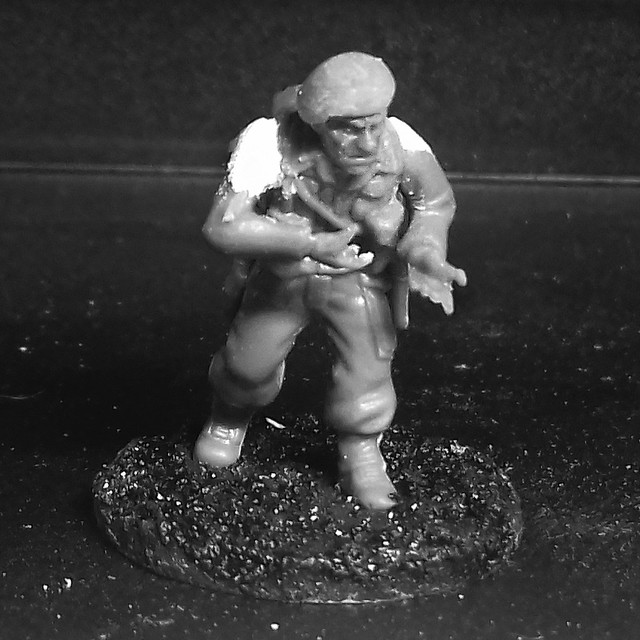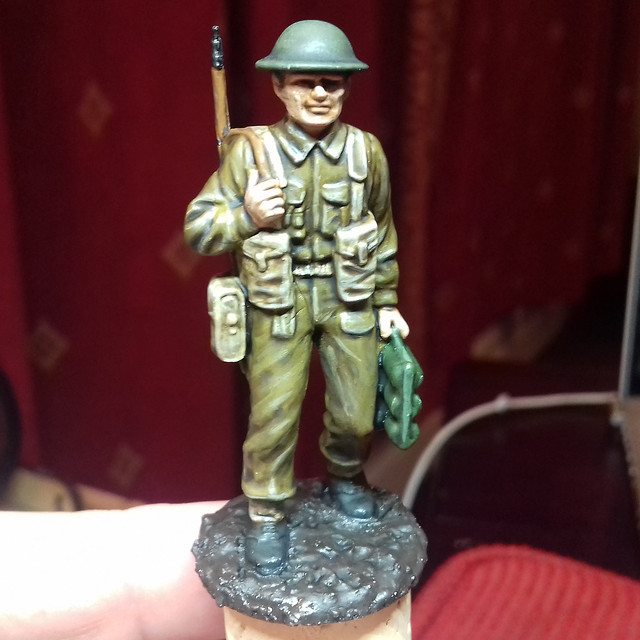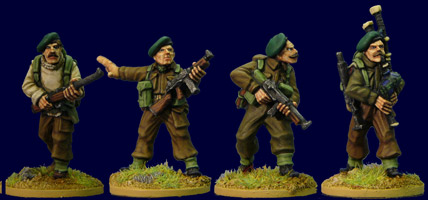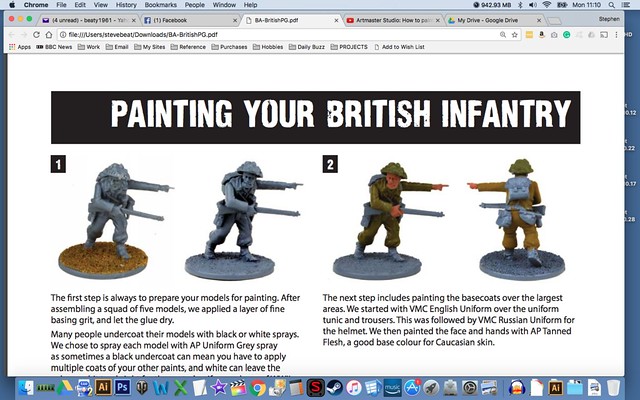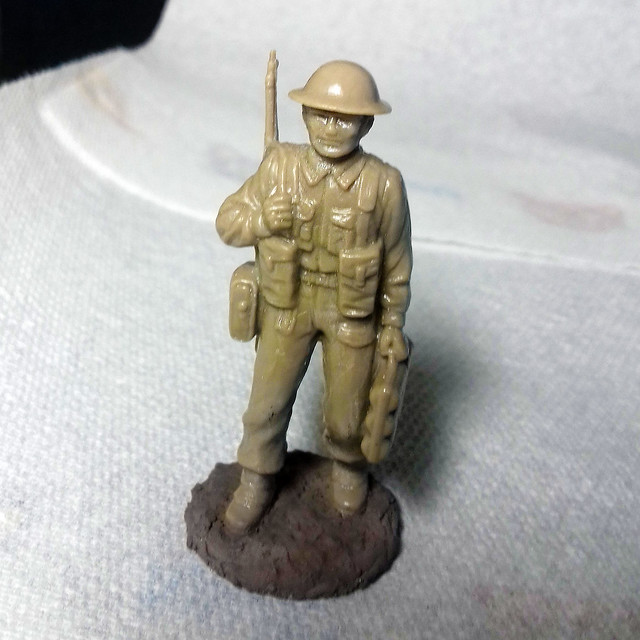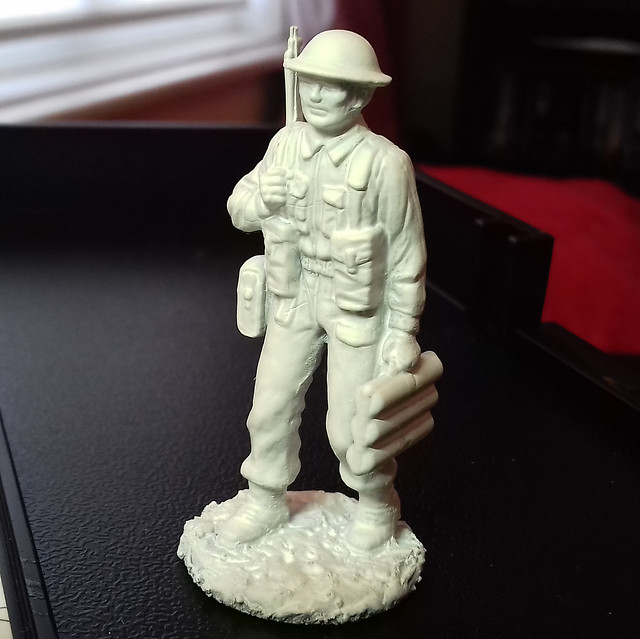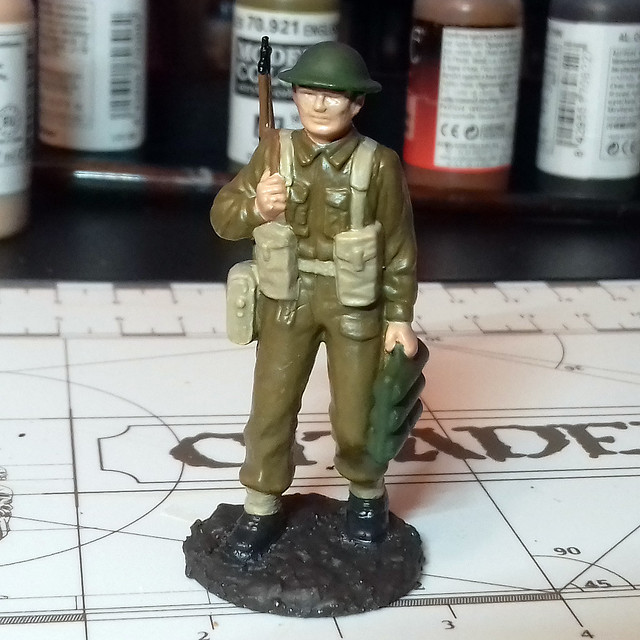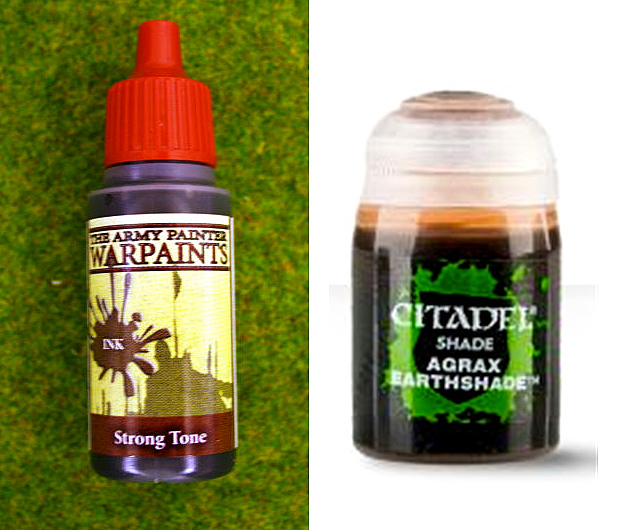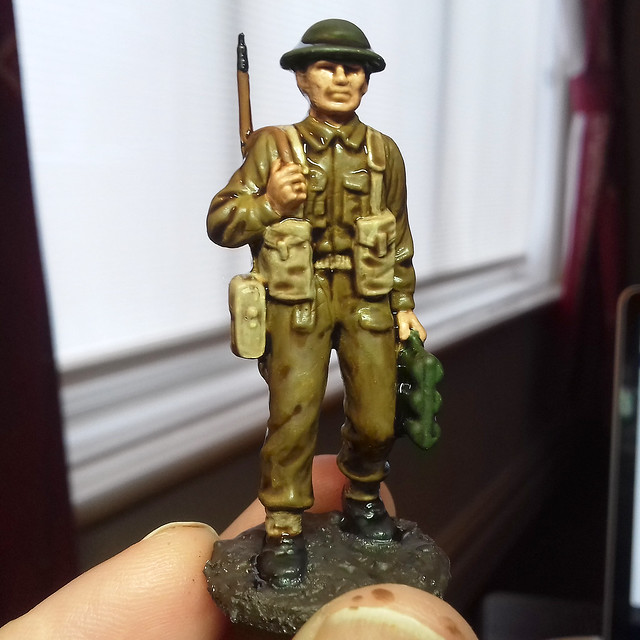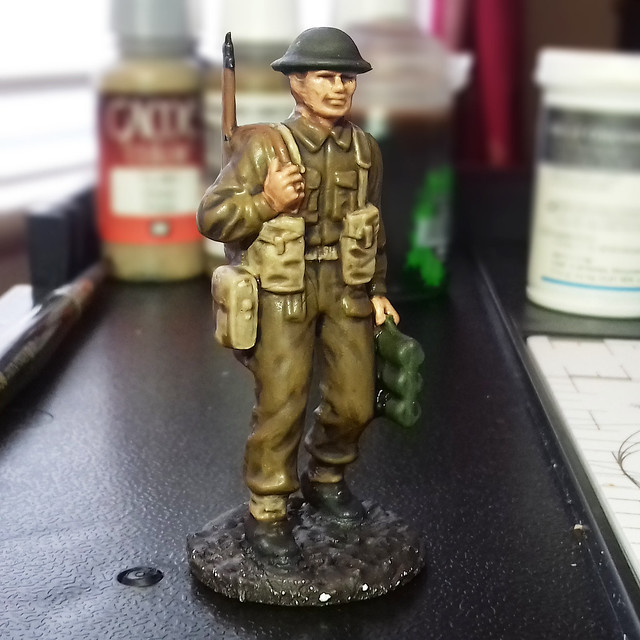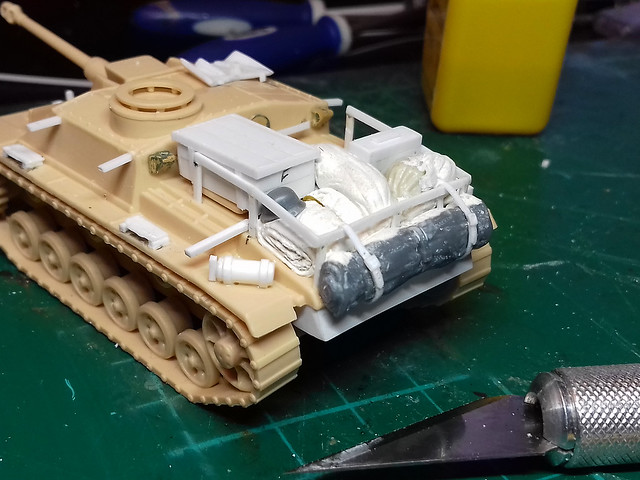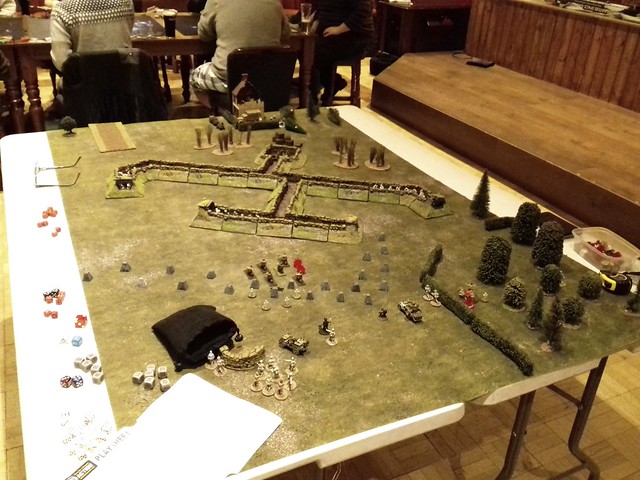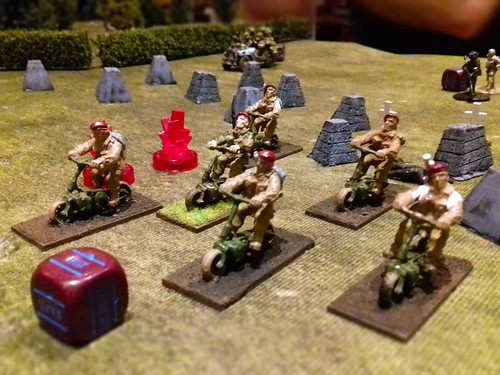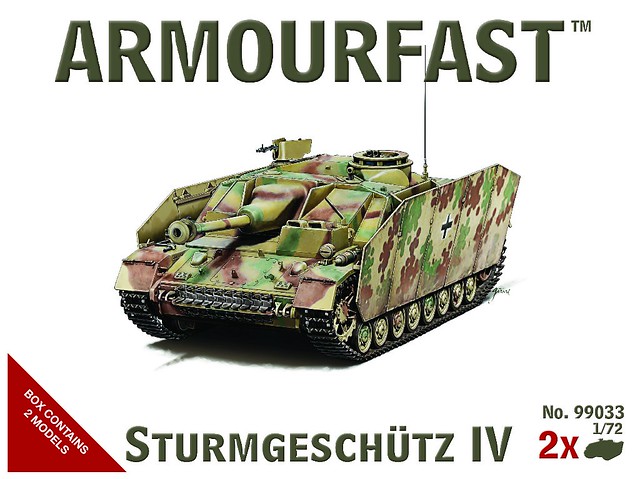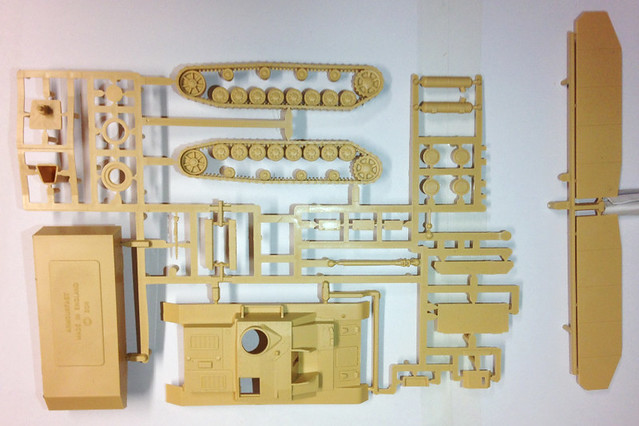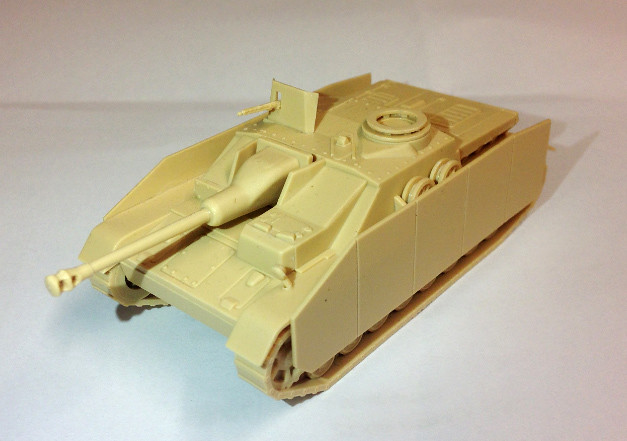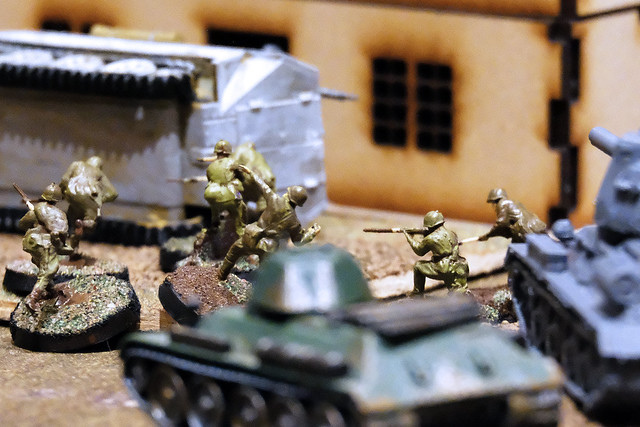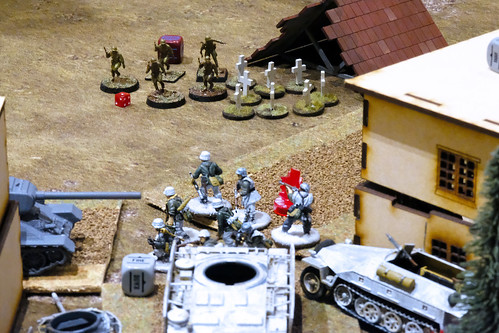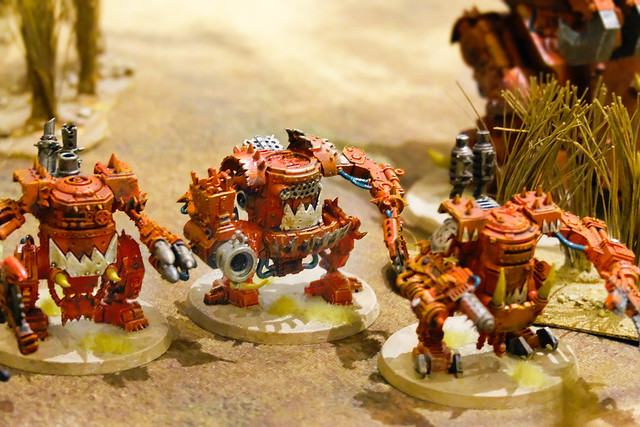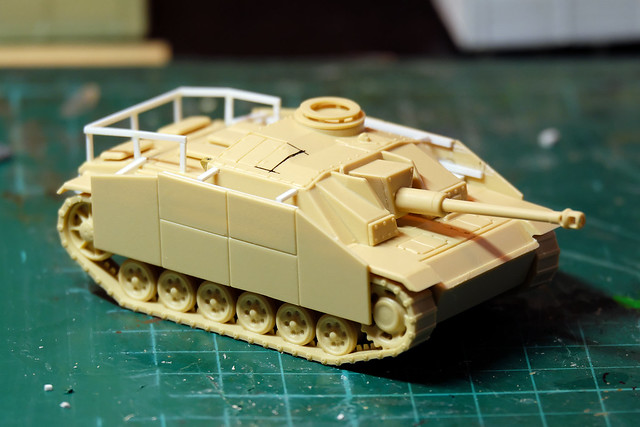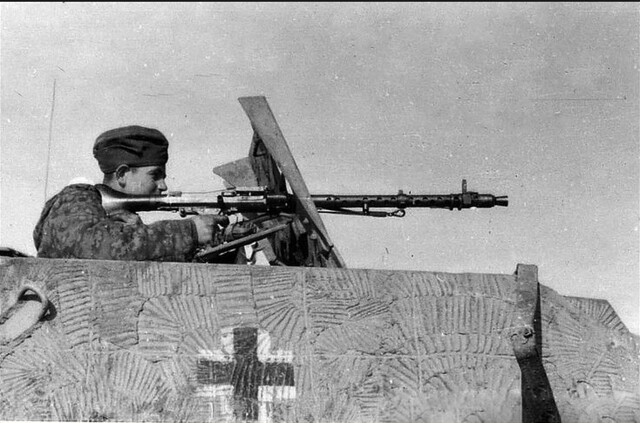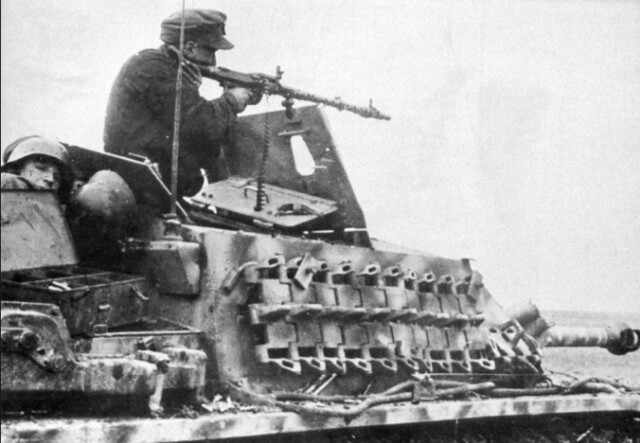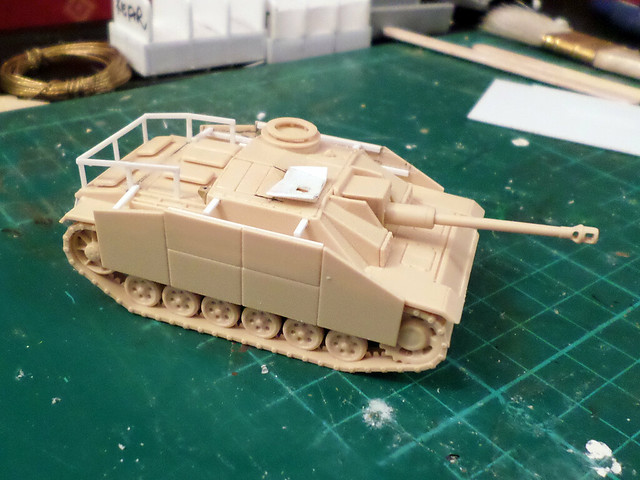I am pretty sold on the Artizan Commando miniatures (love the sculpting), but I want to do my next painting test on a figure of the correct scale, but then don't want to ruin one of the Artizen figures. So, I bought a sprue from Warlords range of 28mm plastic Commandos, it's handy that Warlord sell their sprues individually, but don't make the mistake I did and buy the figure sprue without also buying the weapons sprue! (I've had to wait a further few days until the weapons sprue arrived before I could get on with making my next test figure.)
Anyway, the postie brought the additional sprue I needed this morning, so let's have a look...
 |
| The additional British Army weapons sprue (£4). |
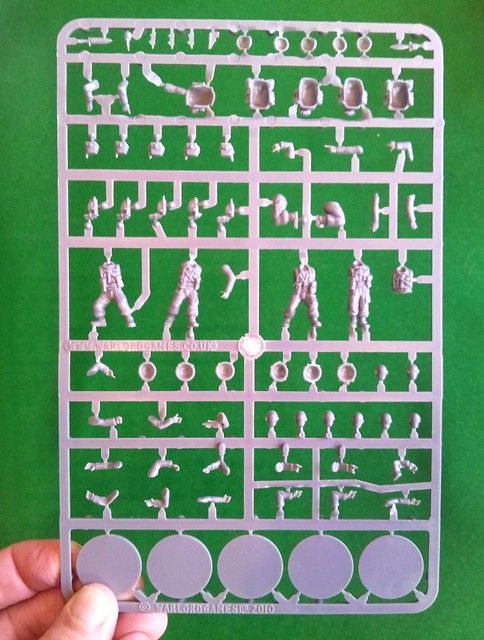 |
| Warlord's 28mm Commandos sprue (£6). There are enough parts to make 5 figures, 5 standing and 1 kneeling. |
 |
| Close-up on the Commandos figure sprue. |
Metal or Plastic?
I suppose one of the questions that the Warlord sprues raise is, what is better, metal or plastic figures?
As I mentioned, I am smitten with Artizan's metal 28mm Commandos, but, of course, you get what poses you are given with them. Plus, there are a limited number of poses within Artizan's range. Therein is the disadvantage of metal miniatures.
Warlord's multipart plastic miniatures system allows a much greater variety of poses to be made, meaning that you need not repeat the same figure again in the same unit. You also have a greater ability to customise your figures and add specific weapon poses.
Artizen's miniature work out at about £1.45 a pop, and while buying Warlord's figures by the sprue - as I did - works out more expensive than metal figures, the real saving is made when you buy a plastic starter set. Warlord's Commandos starter set is £24 and includes enough sprues to make 25 figures (which works out at 96p per figure).
So, are there any downsides to plastic miniatures over metal?
Well, it may be a bit of a personal preference, but I think the extra weight of the metal figures is something of an attractive attribute over their plastic counterparts. I worry that plastic miniatures might break when handling as they just don't feel durable.
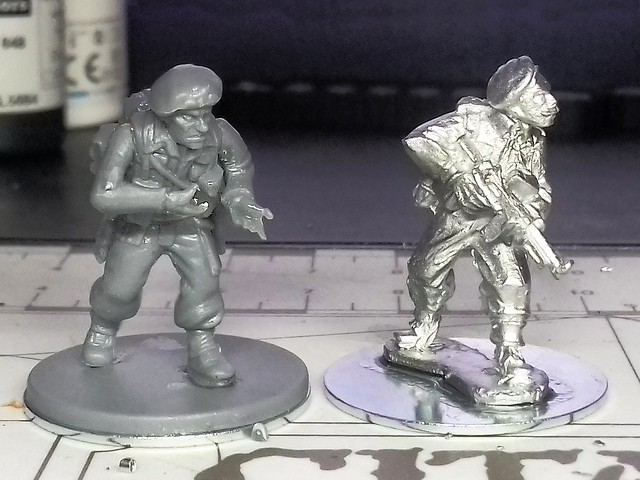 |
| Left: A Warlord multipart plastic 28mm Commando (minus weapon, as I have been advised to paint them separately). Right: An Artizan one-piece metal Commando. |
 |
| Equipment comparison between Warlord plastic and Artizan metal figures. The poor old Warlord Commando is very heavily laden! |
The Finished Figure...
After much messing around - and referring to a couple of other modeller's blogs - I managed to piece together my test Commando. In all, there were 9 pieces in this little kit (and no pilot holes or pegs, so much of the limbs and equipment just 'hangs' where you glue it)!
I am not entirely happy with Warlord's flimsy plastic weapons and I think I prefer the chunky one-piece metal ones. Being an integral part of the figure sculpture the metal weapons look less breakable.
Basing
Just a quick note on basing. To compensate for the exceedingly light-weight plastic figure I decided to use 25mm Steel Repair Washers as bases. These not only give the figures a little bit of heft, but can also be used in combination with magnetic sheets (in case you want to 'stick' a group of figures to a magnetic strip so you can move the figures as a unit).
Finally, I will be adding some ground effects by slapping on a thin layer of Pollyfilla (mixed with some of Vallejo's 'Black Lava', which has a nice gritty texture). This will not only give the figures an attractive terrain effect but will also disguise the different basing techniques.
Next: Priming the test models.

